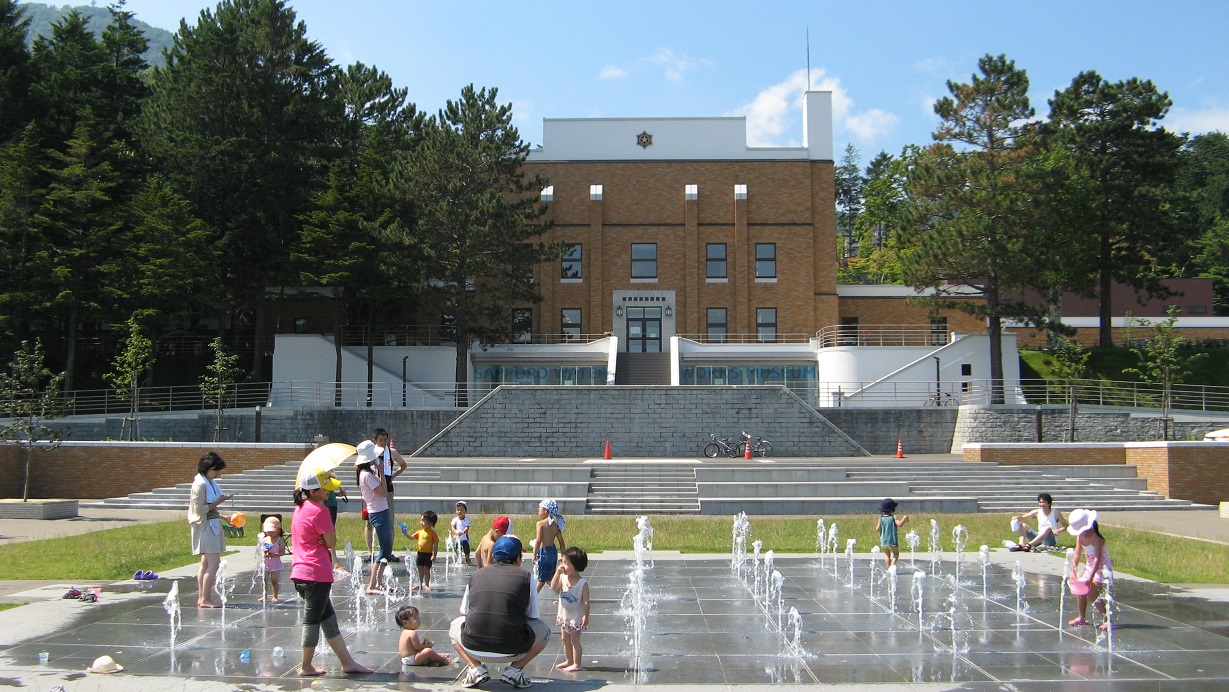
The fountain plaza in front of the Sapporo Waterworks Museum features a panoramic view of the city of Sapporo (photo courtesy of Sapporo Waterworks Museum)

The fountain plaza in front of the Sapporo Waterworks Museum features a panoramic view of the city of Sapporo (photo courtesy of Sapporo Waterworks Museum)
Q1: What is the average amount of water we use in a day?
Q2: When the water supply is cut off due to a disaster, where is the nearest place to refill water from your house?
Q3: Why does Sapporo tap water taste so good?
The answers to these questions can be found by taking a tour of the Sapporo Waterworks Museum. This is a museum where you can learn about water from various different perspectives.
The museum is divided into two main sections, the Aqua Museum and the Waterworks Room. The main Aqua Museum has a unique structure in which visitors themselves become the rain that falls on the mountain and flows through a dam, a river, a water treatment plant, a town, a household, and finally the ocean in order to experience the journey of water.
The water journey begins in the Water Source Forest Zone. Here, you will see that water sources are controlled by an elaborate combination of nature's activities, including microorganisms, soil, trees, and the four seasons.
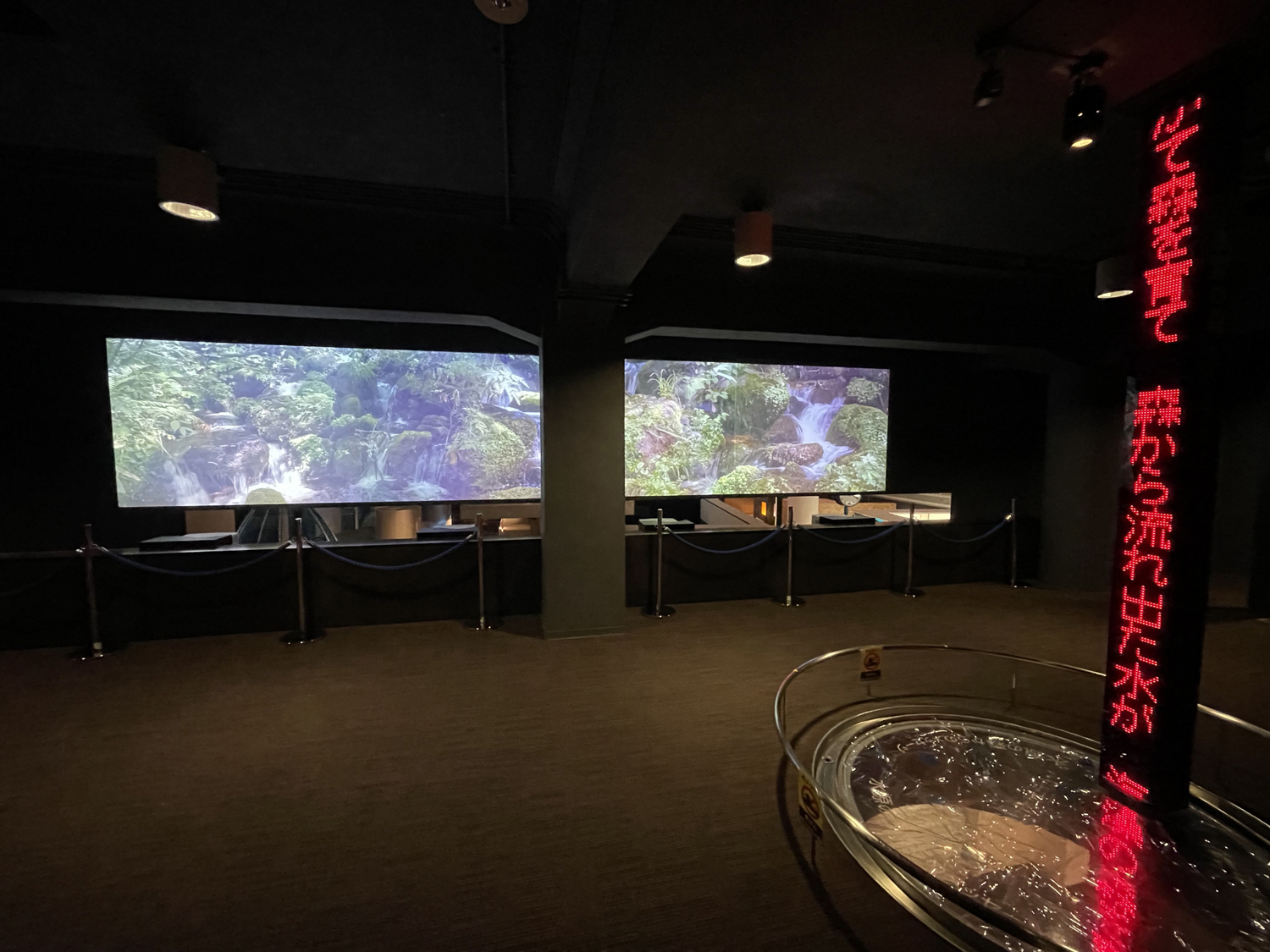
Water Source Forest which provides information on the relationship between nature and water in the forest
Rain and snowmelt in the forest collect in a dam and become a river. Next is the Water Factory Zone, where visitors can experience the process in which raw water is transformed into drinking water. Here, visitors can learn about what goes on inside a water purification plant.
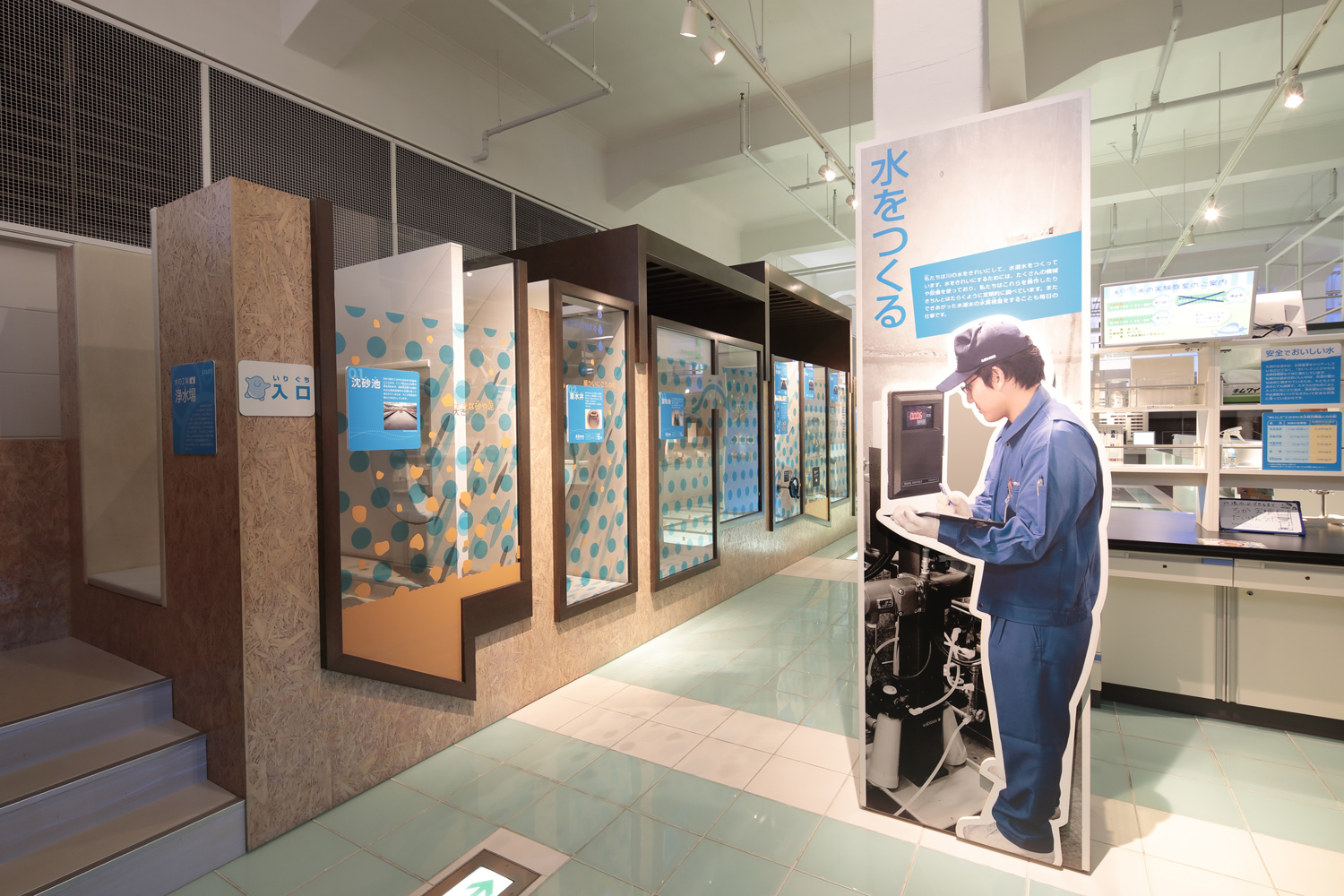
Experiencing how a water treatment plant works
Further ahead is the Aqua Town Zone. This zone features intuitive ways to learn about water, such as expressing the amount of water used in daily life in terms of plastic bottles.
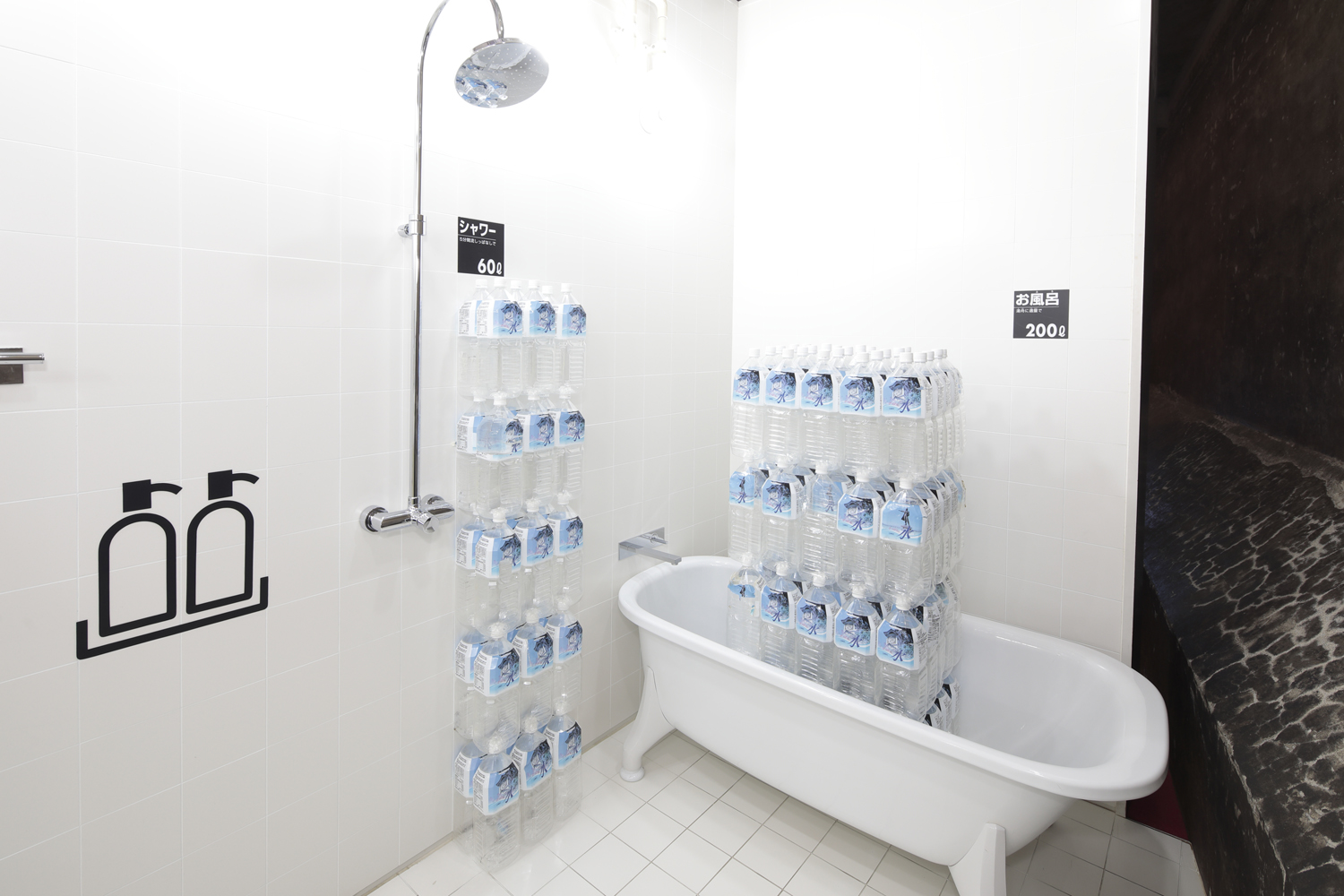
Water usage looks realistic when expressed in plastic bottles
The Science Park Zone features hands-on exhibits using water, including the most popular Water Circulation Gym and a giant water pistol game, which are sure to be a hit with the kids.
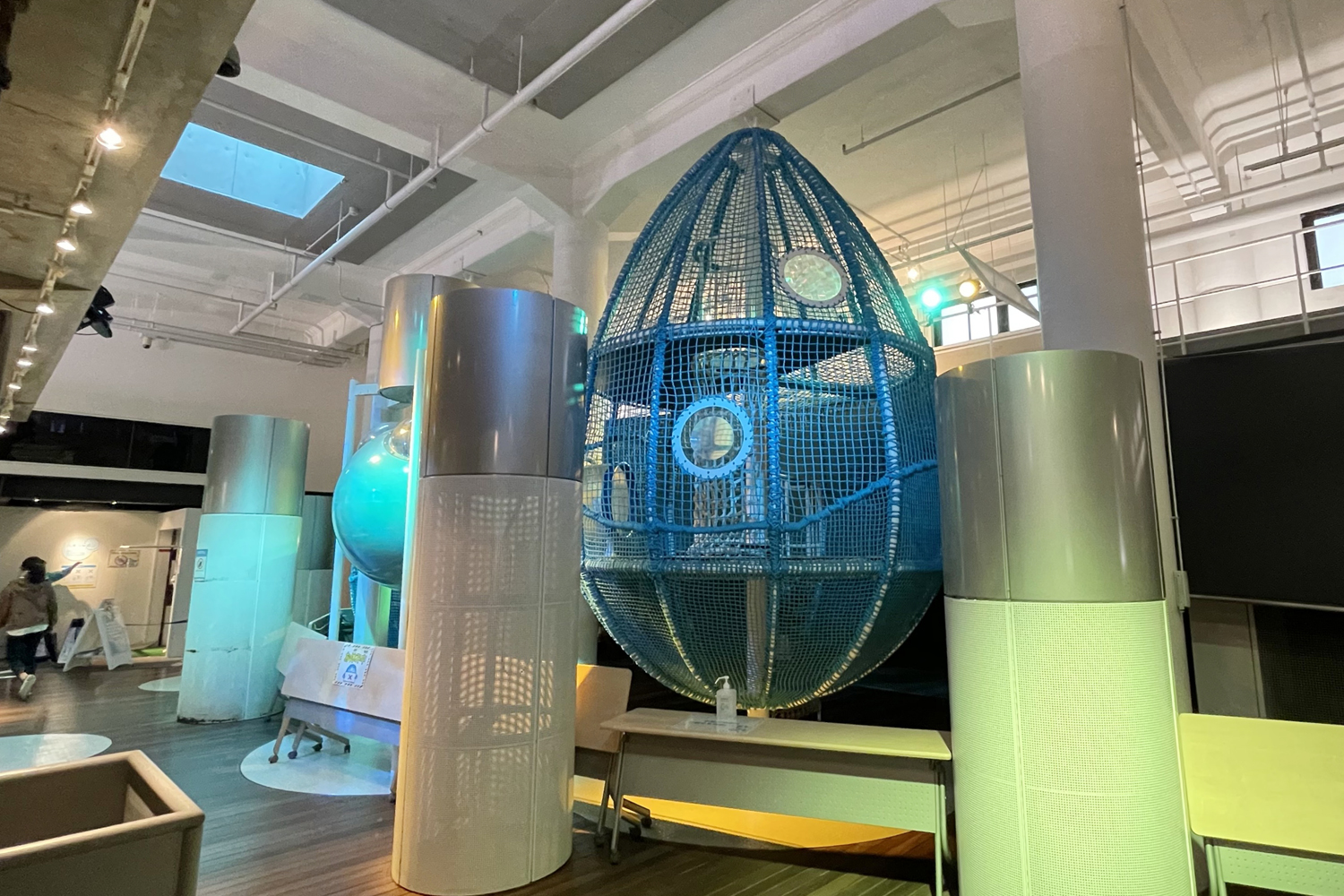
Giant jungle gym called the Water Circulation Gym
The last zone is the Waterworks Play Studio Zone. This exhibit condenses the water journey we have seen so far and provides an overview of the entire water cycle.
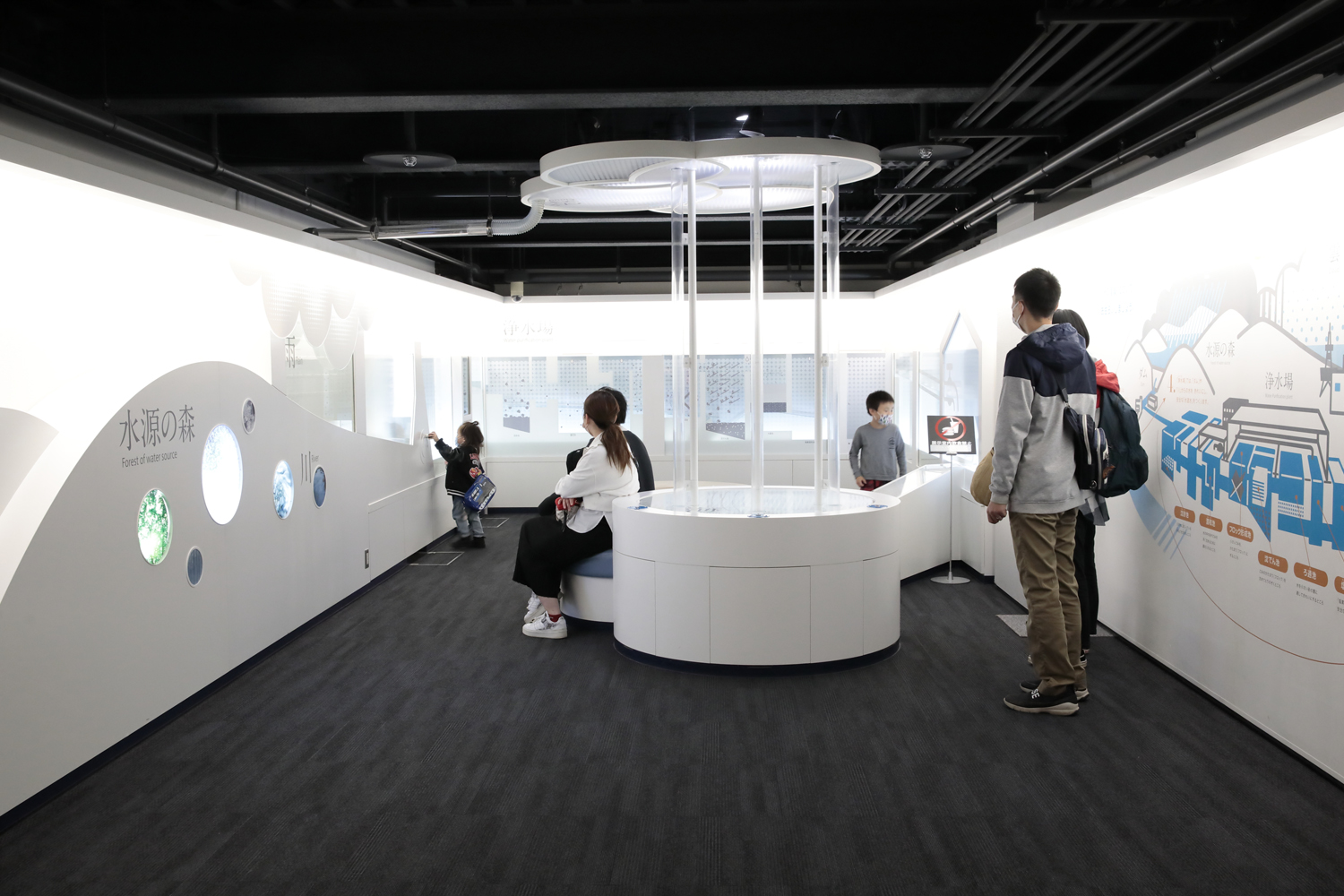
Reproduces the water's journey in the form of a ball, showing the entire circulation process in one place
The museum was established in 1977 to commemorate the 40th anniversary of the founding of Sapporo's waterworks system. It was renovated and reopened in 2007, and by the end of 2022, a total of 1.28 million people have visited the museum.
The building of the museum utilizes the Moiwa Water Purification Plant, the first water purification plant built in Sapporo. A new Moiwa Water Filtration Plant was built next to the museum, and the amount of water it supplies has been increased. This plant supplies approximately 129,000 m3 of water daily to the entire Chuo area.

There are also remnants of the former water purification plant in the exhibition space on the first floor underground.
"We want people to know that Sapporo's water tastes great," said Yoneya Noriyoshi, director of the Sapporo Water Service Association, which operates the Sapporo Waterworks Museum, and staff member Tokumoto Yuho.
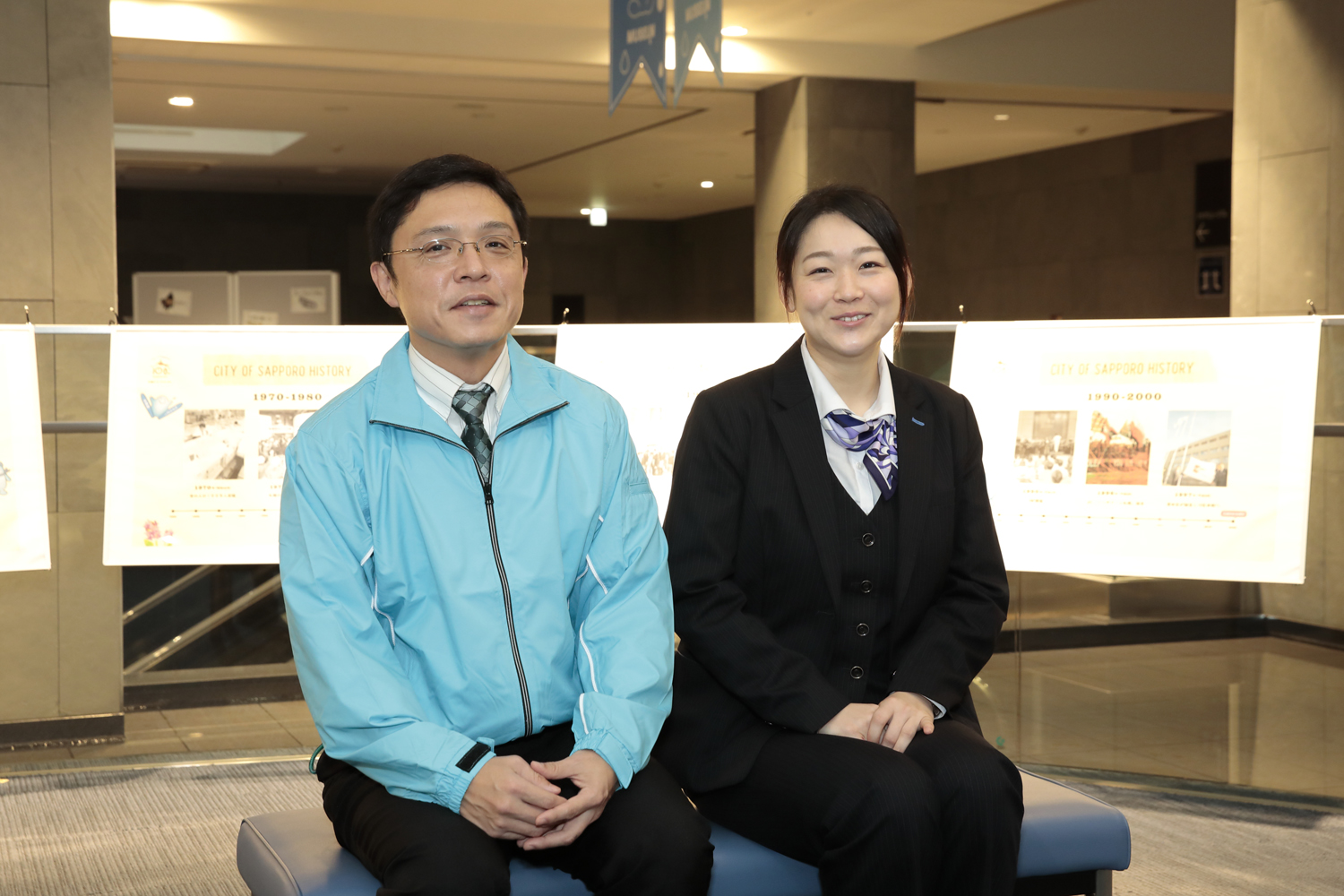
Director Yoneya (left) and Tokumoto
"Sapporo City gets 98% of its tap water from the Toyohira River, and upstream there are two large dams, the Hoheikyo Dam and the Jozankei Dam. The water sources around the dams are in an unpolluted environment, and the beautiful nature preserves our precious water. We are very blessed to have this environment preserved in a city with a population of 1.9 million," explained Yoneya, the director of the museum.
In order to ensure this great tasting water is supplied to households, it is essential to protect the abundance of the headwaters, as well as to manage the quality of the water on a daily basis and maintain the water distribution pipes. It is also necessary to respond to disasters.
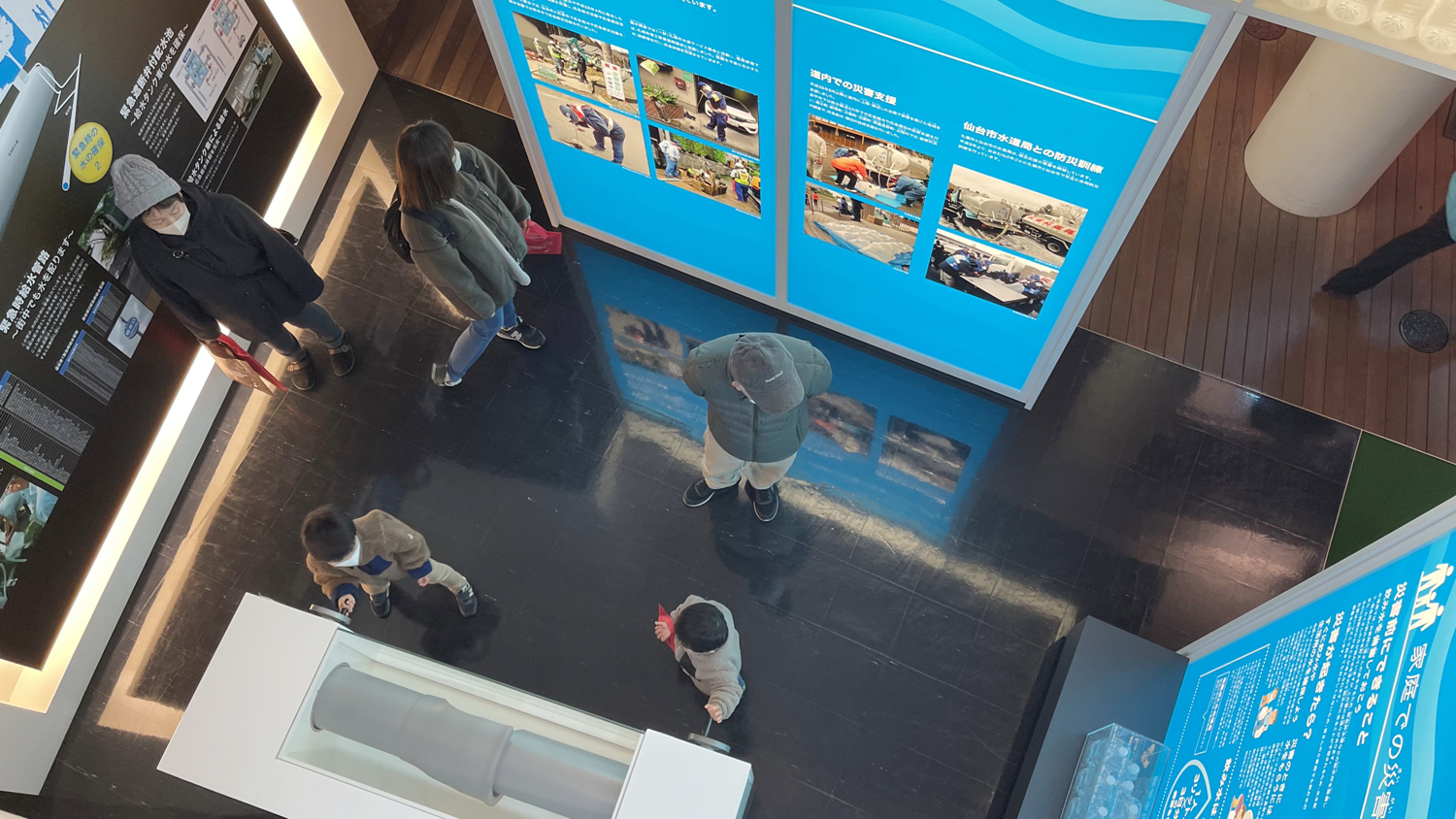
Information on the location of water outlets in the community and other useful information in the event of a disaster.
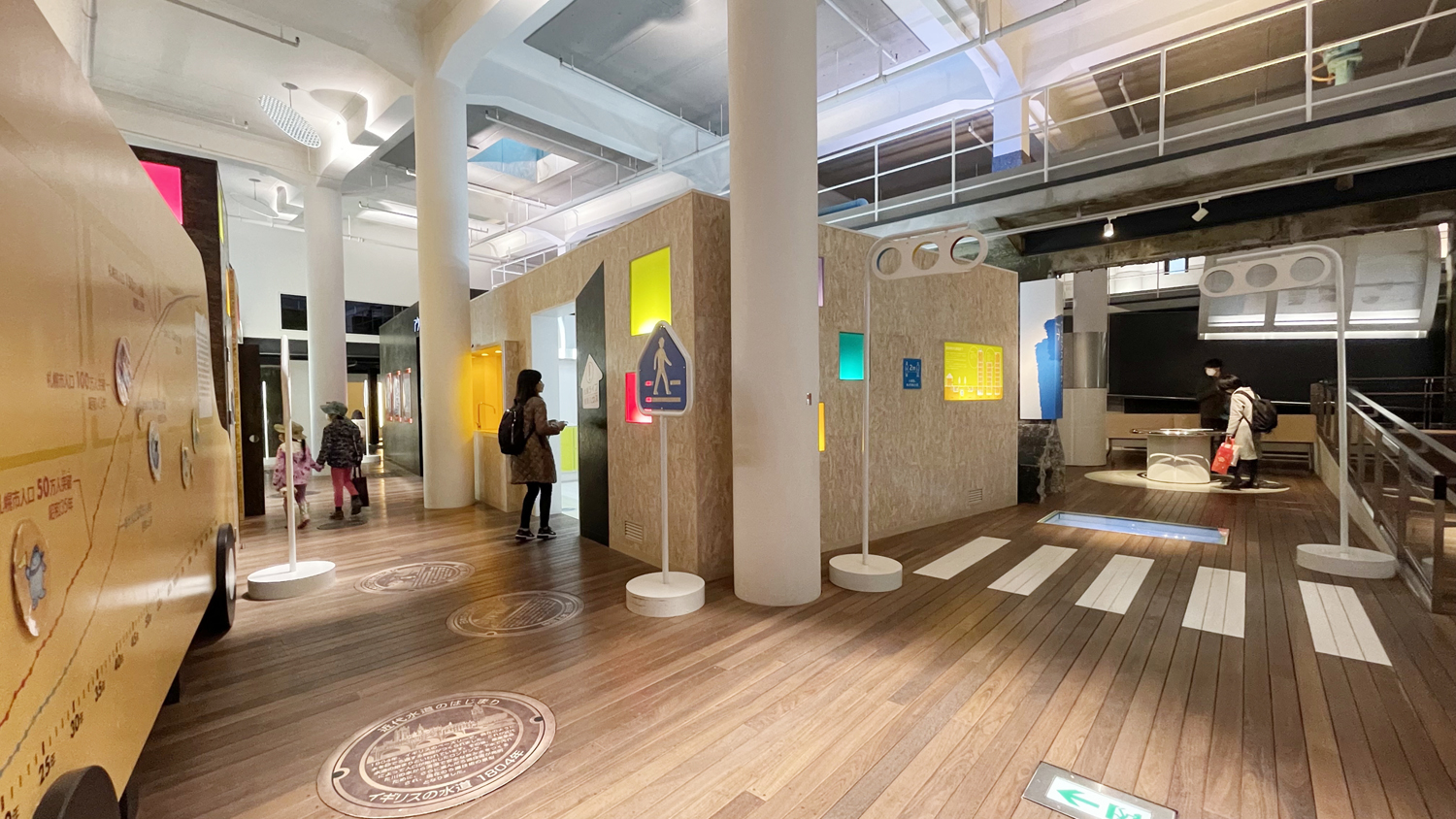
Aqua Town shows the relationship between the city, daily life, and water.
Being able to turn on the tap and have great-tasting water is something we take for granted, and we shouldn't. While various people involved in the water supply work day in and day out to maintain it, there are ways we can help at home. One thing to be careful of, especially in Hokkaido, is frozen water pipes. In closing, Director Yoneya said the following.
“In Sapporo, more than 10,000 cases of pipes freezing over can happen in a year. If the temperature drops below minus 4 degrees Celsius, please remember to drain the water when leaving your house for an extended period of time."
I hope you too can experience becoming a drop of water in a big river to go out and explore the secrets of great tasting water.
Sapporo Waterworks Museum 
Fushimi 4-chome, Chuo-ku, Sapporo, Hokkaido, Japan
Tel.: 011-561-8928
Hours: 9:30-16:30, closed on Mondays (or the weekday immediately following Monday if Monday is a holiday)
Open from mid-April to mid-November (see website for details)
Admission: Free of charge
Website